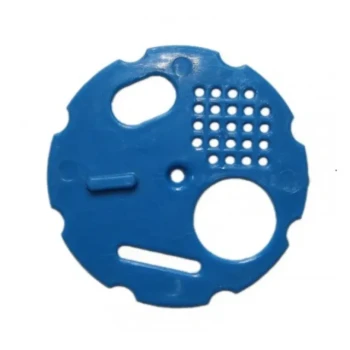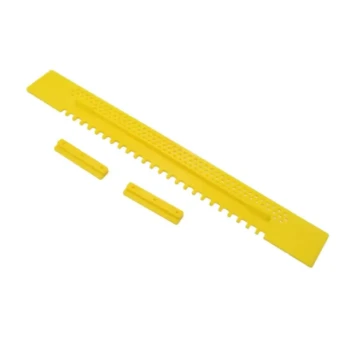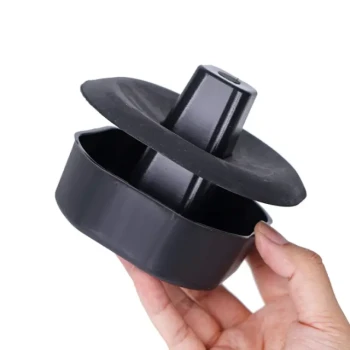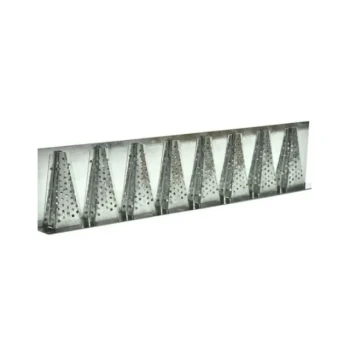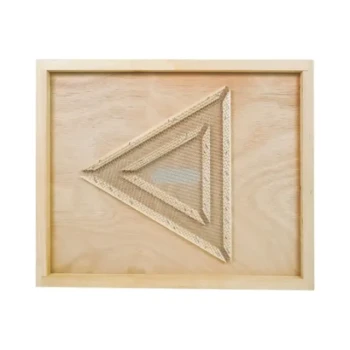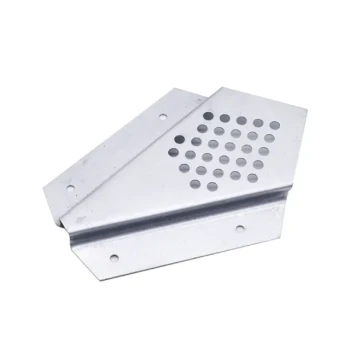Under no circumstances should you seal the entrance to a beehive. While it may seem like a simple solution, it creates a cascade of severe problems that are far worse than the initial issue. The bees trapped inside will die, and the hive's contents—honey, wax, and brood—will begin to rot, causing structural damage and attracting a host of other pests.
Sealing a beehive entrance does not eliminate the problem; it transforms an active bee colony into a decomposing, pest-attracting disaster hidden within your walls that is significantly more difficult and expensive to resolve.
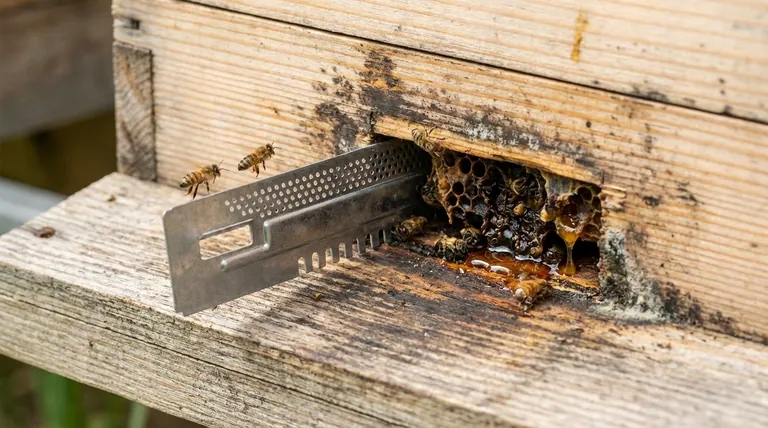
The Immediate Aftermath: Chaos and Damage
When a hive entrance is sealed, the colony immediately enters a state of crisis. The consequences are swift, affecting both the bees and the structure they inhabit.
For the Bees Trapped Inside
The colony's intricate system of climate control is instantly broken. Bees regulate the hive's temperature and humidity by fanning their wings at the entrance, and without this ventilation, the hive will rapidly overheat.
This lack of airflow also leads to suffocation. The bees will die from a combination of overheating, a lack of oxygen, and stress, creating a large mass of decomposing insects within the structure.
For the Foragers Trapped Outside
At any given time, a significant portion of the colony is outside foraging for nectar and pollen. These returning bees will find their entrance blocked, causing them to become disoriented and highly agitated.
They will desperately swarm around the sealed entrance, and this distress can make them more defensive and likely to sting.
The Search for a New Exit
Bees trapped inside will not simply die quietly. Their survival instinct will drive them to find any other way out.
They will begin to probe and chew through softer materials, which often means drywall, plaster, or insulation. This frequently results in a large number of distressed bees emerging inside the home or building, creating a dangerous and alarming situation.
The Secondary Disaster: What Gets Left Behind
The true problem begins after the bees are dead. An established beehive is a complex biological structure containing a significant amount of organic material that will not simply disappear.
The Decomposing Hive
A single hive can contain many pounds of honey, beeswax, pollen, and thousands of dead adult bees and their larvae (brood). Sealing them in a wall cavity creates a time bomb of decay.
Fermenting Honey and Structural Damage
Without the bees to manage it, the stored honey will absorb moisture from the air and begin to ferment. This fermenting honey will expand and ooze out of the wax combs.
This sticky, acidic liquid can seep through drywall, ceilings, and siding, causing unsightly stains, attracting mold, and leading to rot in wooden structural components.
A Magnet for Other Pests
As noted by professionals, a dead hive is an open invitation for other pests. The rotting brood, pollen, and sweet honey will attract a secondary infestation that is often much harder to manage.
Common invaders include ants, cockroaches, wax moths, carpet beetles, and rodents like mice and rats. You will have traded a bee problem for a multi-pest infestation.
The Correct Approach: Professional Removal
Sealing the entrance is a counterproductive strategy that demonstrates a misunderstanding of the core problem. The problem isn't the entrance; it's the hive itself. The only effective and permanent solution is to have the entire hive—bees, comb, and all—physically removed.
Why Removal is the Only Solution
Simply killing the bees with pesticides presents the same problem as sealing: you are still left with a rotting hive in your walls that will attract pests and cause structural damage.
A professional bee removal service or a local beekeeper will open the structure, carefully cut out the comb, and remove all associated materials. They can then properly clean and repair the area to prevent future issues.
Making the Right Choice for Your Situation
Never attempt to seal an active beehive. Instead, choose a removal strategy that ensures the problem is solved completely and safely.
- If your primary focus is humane and ecological responsibility: Contact a local beekeeping association. Many beekeepers will remove accessible hives and swarms for a small fee or even for free, as they can relocate the colony to their apiary.
- If your primary focus is speed and structural repair: Contact a professional pest control or bee removal company that specializes in "live removal" and structural repair, not just extermination.
- If you see a hanging cluster of bees with no visible comb: This is a swarm, not an established hive. They are resting. Contact a beekeeper immediately, as they can usually collect a swarm easily before it moves into a wall.
Solving a bee problem correctly from the start by removing the hive is the only way to protect your property and prevent a much larger crisis down the road.
Summary Table:
| Consequence of Sealing a Hive | Outcome |
|---|---|
| For the Bees | Suffocation, overheating, and death. Foragers become aggressive. |
| For the Structure | Fermenting honey and wax cause stains, rot, and mold. |
| Secondary Infestation | Attracts ants, rodents, wax moths, and other pests. |
Don't let a bee problem become a structural disaster. Sealing the hive is not the solution. For commercial apiaries and beekeeping equipment distributors, proper hive management is critical. HONESTBEE supplies the professional-grade equipment needed for safe and effective beekeeping practices. If you're facing a hive removal challenge or need reliable supplies, contact our experts today for a solution that protects your investment and your bees.
Visual Guide
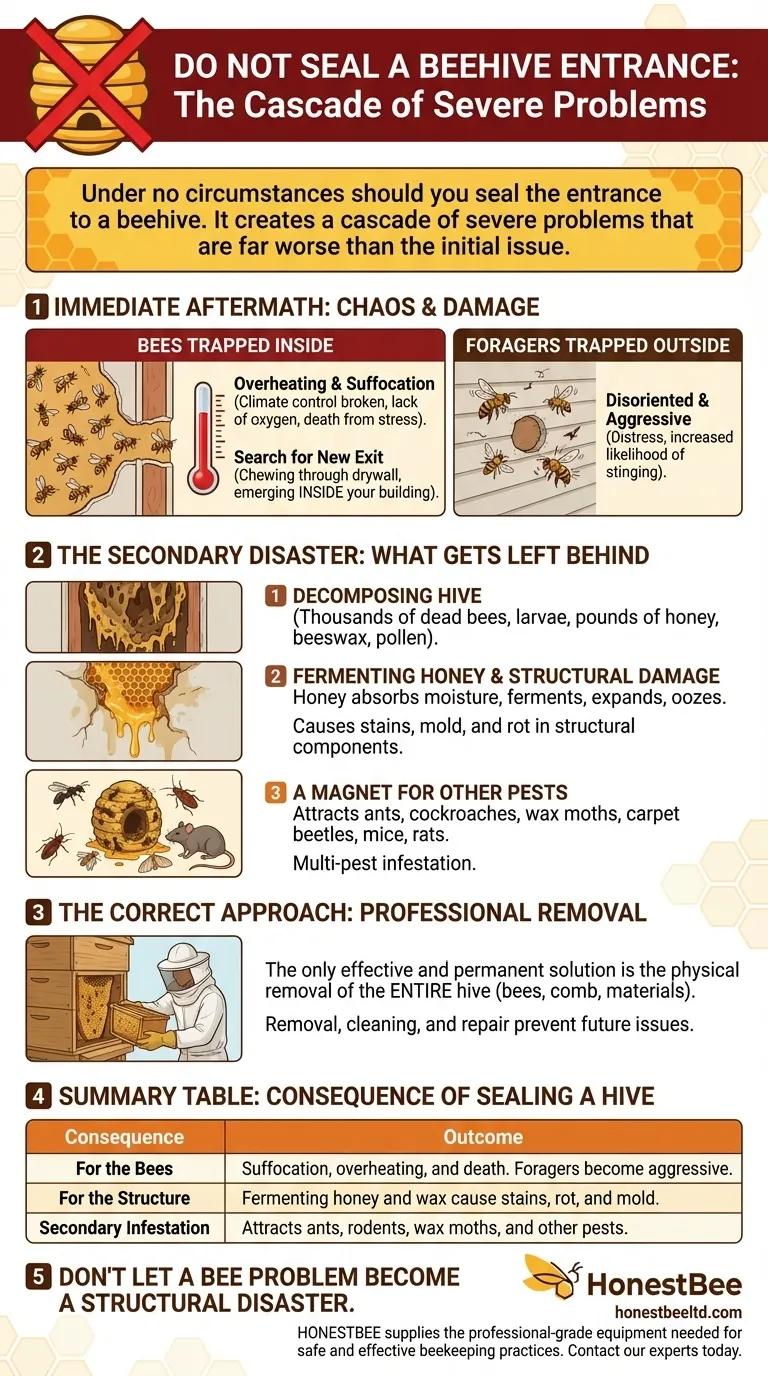
Related Products
- Beehive Entrance Reducer Guardian Metal Hive Entrance for Bees
- Multi-Functional Sliding Hive Entrance for Beekeeping
- Steel Round Disc Entrance Reducer for Flexzion Bee Hive Nuc Box Gate
- Multi-Functional Rotary Hive Entrance Disc for Beekeeping
- Professional Reversible Beehive Hive Entrance
People Also Ask
- What are the features of the side with oblong holes in the entrance reducer? A Guide to Hive Defense & Health
- What are the different entrance sizes for an 8 or 10-frame Langstroth hive? A Guide to Seasonal Management
- What are the different types of entrance reducers available? A Guide to Protecting Your Hive
- What size is the entrance hole in a native bee hive? The 13mm Standard for a Thriving Colony
- How can a Langstroth hive entrance be adjusted? Mimic Natural Bee Preferences for a Healthier Hive



